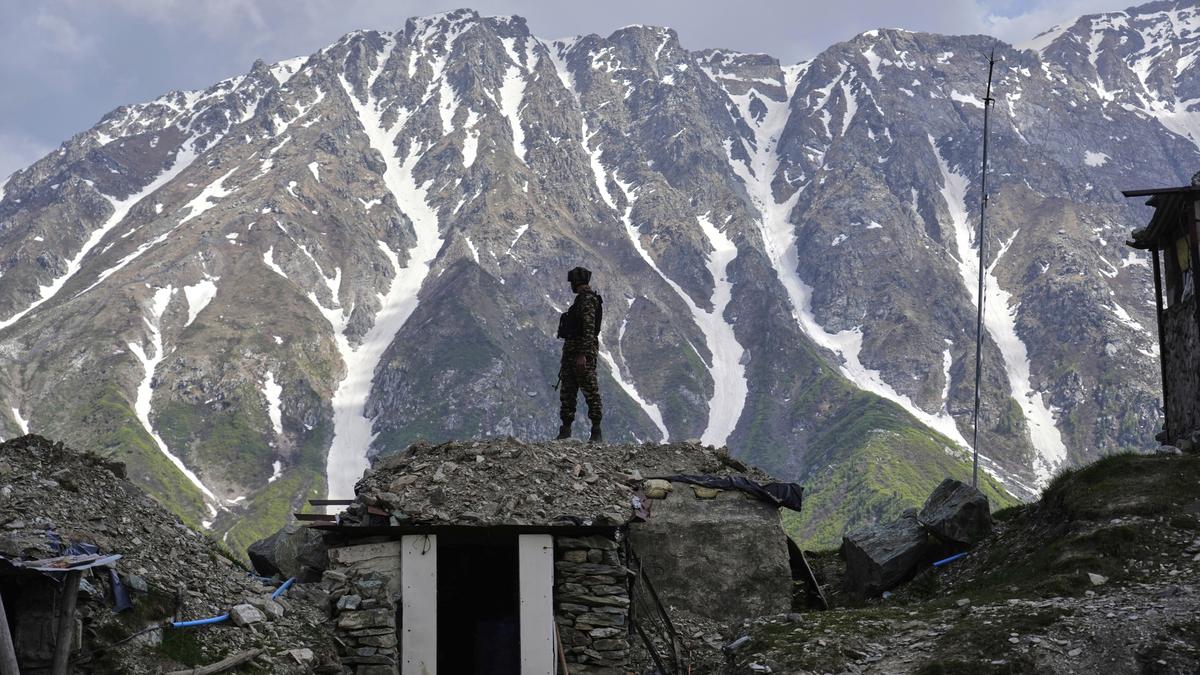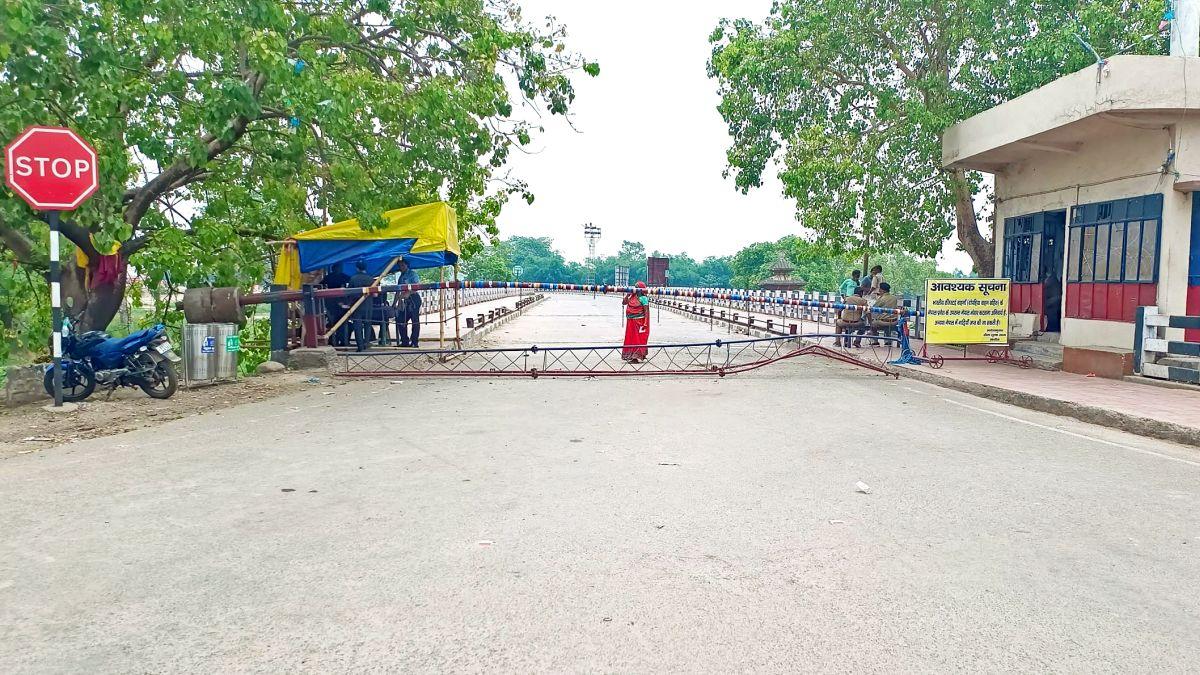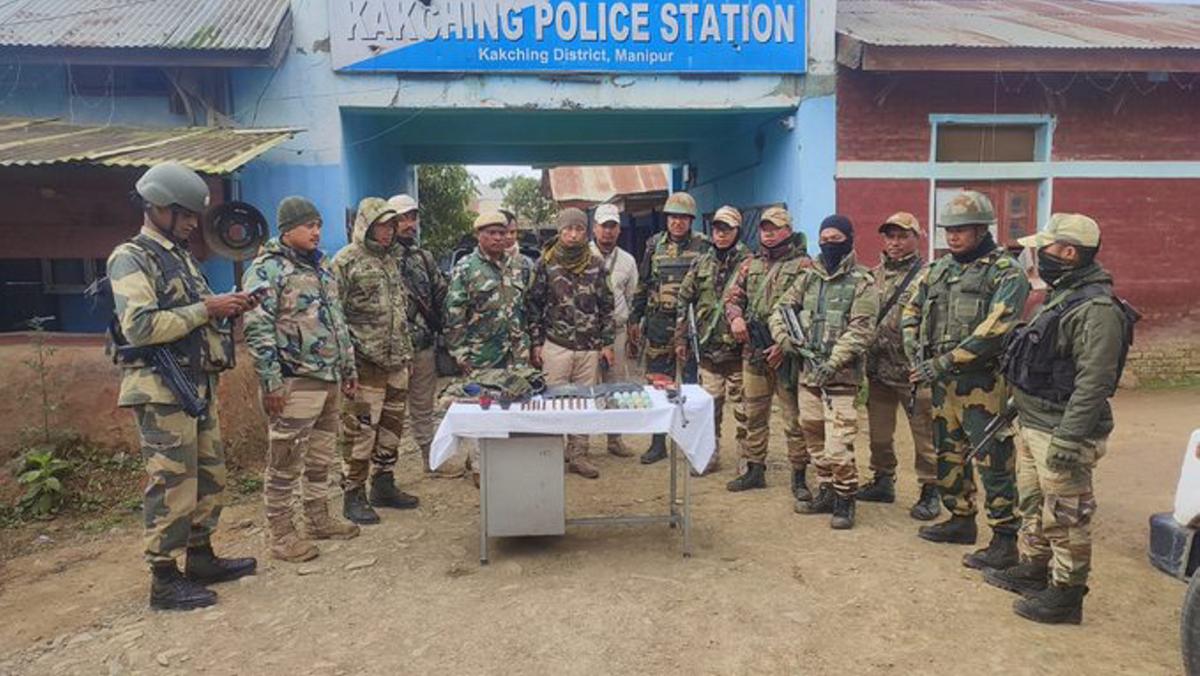SOURCE: AFI

In a display of unparalleled aerial dominance, the Indian Air Force (IAF) executed a meticulously planned salvo attack using SCALP and BrahMos-A missiles to strike Pakistan Air Force (PAF) air bases during Operation Sindoor, launched in response to the April 22, 2025, terror attack in Pahalgam, Jammu and Kashmir.
The operation, which targeted terrorist infrastructure in Pakistan and Pakistan-occupied Kashmir (PoK), saw the IAF leverage the complementary capabilities of the SCALP’s stealth and the BrahMos-A’s Mach 3 speed to overwhelm PAF defenses, delivering a crippling blow to their operational capacity. This strategic combination not only evaded Pakistan’s air defense systems but also showcased India’s advanced missile technology and tactical ingenuity.
Continue readingSOURCE: AFI

India’s National Security Adviser (NSA) Ajit Doval is scheduled to visit Moscow in the coming days to attend the 13th International Meeting of High Representatives for Security Issues, set for May 27–29, 2025. Amid escalating regional tensions, Doval is expected to press the Russian government for the expedited delivery of the remaining two S-400 air defense systems, a critical asset for India’s military. This urgency stems from the S-400’s unprecedented performance during the recent India-Pakistan conflict, where the system was fired at least 11 times and achieved a historic milestone by taking out a Pakistan Air Force (PAF) Saab 2000 Erieye Airborne Early Warning and Control (AEW&C) aircraft operating deep inside Pakistani airspace at a record-breaking range of 314 kilometers.
The S-400, christened “Sudarshan Chakra” by India, proved its mettle during Operation Sindoor, launched in response to the April 22, 2025, terror attack in Pahalgam, Jammu and Kashmir, which claimed 26 civilian lives. India’s retaliatory strikes targeted terrorist camps in Pakistan and Pakistan-occupied Kashmir (PoK), prompting a large-scale Pakistani counteroffensive. On the night of May 7–8, 2025, the PAF attempted to engage military targets across 15 Indian cities, including Srinagar, Pathankot, Amritsar, and Bhuj, using 300–400 drones and air-launched missiles, including the Chinese-made PL-15E.
Continue readingSOURCE: AFI

Bengaluru, the hub of India’s aerospace innovation, has once again captured global attention with the emergence of a new stealth-shaped unmanned aerial vehicle (UAV) at the Indian Air Force’s (IAF) prestigious Aircraft and Systems Testing Establishment (ASTE). On May 25, 2025, images of the sleek, red-colored UAV with distinct stealth features surfaced, sparking widespread interest among defense analysts and enthusiasts. The UAV, spotted at ASTE’s facility in Bengaluru, is believed to be part of the IAF’s ongoing efforts to enhance its autonomous warfare capabilities through cutting-edge experimentation.
The Aircraft and Systems Testing Establishment, located in Bengaluru, is the IAF’s premier institution for flight testing and evaluation. Renowned for its role in shaping India’s aerospace capabilities, ASTE has a dedicated group focused on testing and developing unmanned aerial vehicles (UAVs). This group regularly conducts experiments to push the boundaries of aerial technology, ensuring the IAF remains at the forefront of modern warfare. The recent sighting of the stealth-shaped UAV underscores ASTE’s pivotal role in advancing India’s indigenous defense technologies, particularly in the realm of autonomous systems.
Continue readingSOURCE: AFI

In a significant diplomatic move, India has formally requested Russia to cease the supply of RD-93 engine spares to Pakistan, citing their use in Pakistan Air Force (PAF) JF-17 Thunder fighter jets deployed against India during the recent India-Pakistan conflict, dubbed Operation Sindoor. This conflict, sparked by a terrorist attack in Pahalgam, Jammu & Kashmir on April 22, 2025, has escalated tensions between the two nuclear-armed neighbors, with Pakistan’s JF-17s playing a prominent role in aerial engagements. India’s concerns center on the strategic implications of these Russian-made engines, which power the JF-17 fleet, and the supply chain dynamics involving China as an intermediary, given that the RD-93 was initially intended for China’s Shenyang J-31 stealth fighter program.
The RD-93, a variant of the RD-33 engine developed by Russia’s Klimov plant under the United Engine Corporation (UEC), is a critical component of the JF-17 Thunder, a lightweight, single-engine, multirole fighter jet jointly developed by Pakistan Aeronautical Complex (PAC) and China’s Chengdu Aircraft Corporation (CAC). The JF-17, with a fleet of approximately 156 aircraft as of September 2024, forms the backbone of the PAF, designed for air-to-air and air-to-ground missions. The RD-93 engine, providing a maximum thrust of 8,300 kgf, has been integral to the jet’s performance, with an upgraded RD-93MA variant (offering 9,300 kgf) developed for the JF-17 Block III, enhancing its combat capabilities.
Continue readingSOURCE: AFI

In a significant step towards modernizing its mechanized forces to meet the evolving threats of contemporary warfare, the Indian Army has begun equipping its BMP-2 “Sarath” Infantry Fighting Vehicles (IFVs) with cope cages for the first time. These protective structures, designed to shield against First-Person View (FPV) drones and loitering munitions, mark a critical adaptation to the changing dynamics of the battlefield, particularly following the recent India-Pakistan conflict, Operation Sindoor, in May 2025.
The integration of cope cages on the BMP-2 fleet underscores India’s proactive approach to enhancing the survivability of its mechanized infantry in response to the growing prevalence of drone-based threats, as observed in recent global conflicts like Ukraine and Nagorno-Karabakh.
Continue readingSOURCE: IANS

Following the failure of the EOS-09 satellite launch on May 18, the Indian Space Research Organisation (ISRO) has constituted a high-level investigation committee to analyse the cause of the anomaly that occurred during the third stage of the Polar Satellite Launch Vehicle (PSLV-C61), as per reports.
The National Failure Analysis Committee, reportedly composed of top scientists – more than half of whom are from premier institutions such as the Indian Institute of Science (IISc) and the Indian Institutes of Technology (IITs)—has been tasked with conducting a detailed review. The panel is expected to submit its report by mid-June.
Continue readingSOURCE: PTI
Congress MP Shashi Tharoor has said that post-Pahalgam attacks, there is now going to be a new norm that no one sitting in Pakistan is going to be allowed to believe that they can just walk across the border and kill Indian citizens with impunity, as he asserted that there will be a “price to pay”.
Tharoor is leading a delegation of Indian parliamentarians to Guyana, Panama, Colombia, Brazil and the US, conveying India’s resolve against terrorism and emphasising Pakistan’s links to terrorism. The multi-party delegations to different countries will underline that the recent conflict with Pakistan was triggered by the Pahalgam terror attack and not Operation Sindoor, as alleged by Islamabad.
Continue readingSOURCE: REUTERS

Pakistan will not get water from rivers over which India has rights, Prime Minister Narendra Modi said on Thursday, a month after a terror attack in Kashmir’s Pahalgam that killed 26 people. It led to New Delhi suspending a key river water-sharing treaty between the neighbours. The suspension of the Indus Waters Treaty, negotiated by the World Bank in 1960, was among a slew of measures announced by India against Pakistan last month after the April 22 attack. The nuclear-armed neighbours were involved in their worst military fighting in nearly three decades before agreeing to a ceasefire on May 10.
“Pakistan will have to pay a heavy price for every terrorist attack … Pakistan’s army will pay it, Pakistan’s economy will pay it,” Modi said at a public event in Rajasthan, which borders Pakistan. The Indus treaty provides water for 80% of Pakistan’s farms from three rivers that flow from India but Pakistan’s finance minister said this month that its suspension was not going to have “any immediate impact”.
Continue readingSOURCE: PTI

Pakistan Prime Minister Shehbaz Sharif in conversation with the leaders of Iran and Egypt said that his country was determined to defend its integrity at all costs, the Foreign Office said on Friday. Sharif held telephonic conversations with Iranian President Masoud Pezeshkian and Egyptian President Abdel Fattah Al-Sisi, according to a statement by the Foreign Office spokesperson.
“He reaffirmed Pakistan’s firm resolve to defend its sovereignty and territorial integrity at all costs,” the Foreign Office said. Sharif also expressed his concern over India’s attempt to “unilaterally hold the Indus Waters Treaty in abeyance and emphasised that the Jammu and Kashmir dispute remains the root cause of instability in South Asia”.
Continue readingSOURCE: PTI

Prime Minister Narendra Modi on Sunday said that Operation Sindoor was not just a military mission, but “the face of a changing India” that reflects the country’s resolve, courage, and growing strength on the global stage.
Addressing the nation through his monthly radio programme Mann Ki Baat, the Prime Minister said, “Today the entire country is united against terrorism, filled with anger and determination.” Modi hailed Operation Sindoor as a turning point in the global fight against terror, describing it as a symbol of India’s growing strength and clarity of purpose.
Continue readingSOURCE: PTI

Pakistan Foreign Office spokesperson Shafqat Ali Khan on Friday (May 23, 2025) said that the ceasefire with India was holding and “we are fully committed to it”. The Foreign Office spokesman, during the weekly briefing, said Pakistan is committed to make this ceasefire hold and de-escalation to succeed and then engagement to lead to stability and resolution of issues.
Mr. Khan also said that the two militaries have a channel of communication through the Directors General of Military Operations, through which they are working for de-escalation, in terms of the movement of troops.
Continue readingSOURCE: UNI

Security has been tightened along the Indo-Nepal international border after intelligence reports have revealed an attempt by more than 30 foreign nationals trying to infiltrate into India, a senior officer said here on Sunday. The officer said that following this information, the Sashastra Seema Bal (SSB) has been directed to remain on high alert. “Amid rising tensions between India and Pakistan after the Pahalgam terror attack, these suspicious persons are feared to have reached Nepal,” he said.
SSB’s 42nd Battalion commander Ganga Singh Udawat said that 35 to 37 Bangladeshi and Pakistani nationals have crossed the border from their countries and come to Nepal. “Their plan is to infiltrate into India through the open border, but the security forces are fully prepared to nab them immediately,” he said. He said that the SSB has intensified patrolling and round-the-clock checking operations are being carried out.
Continue readingSOURCE: UNI

Three persons, allegedly militants belonging to two different outfits, were apprehended by security forces in two separate operations during the last 24 hours, police said on Sunday morning. The police said security forces arrested two militants from Kakching Tejpur crossing along IVR Road of Kakching District.
The security forces arrested another person from the eastern side of the Sawombung Bridge under the Lamlai police station of Imphal East District. Police also recovered a stolen vehicle during an operation.
Continue readingSOURCE: RAUNAK KUNDE / NEWS BEAT / IDRW.ORG

In a major stride toward self-reliance in defense technology, the upgraded Uttam Gallium Nitride (GaN)-based Active Electronically Scanned Array (AESA) radar, developed for the Tejas MkII fighter jet, has officially entered production. The Defence Research and Development Organisation (DRDO), through its Electronics and Radar Development Establishment (LRDE), has confirmed that deliveries of the radar are scheduled to be completed before the rollout of the Tejas MkII prototype, planned for late October or early November 2025. This milestone underscores India’s growing expertise in advanced avionics and its commitment to equipping the Indian Air Force (IAF) with cutting-edge, indigenous systems.
The upgraded Uttam GaN-based AESA radar, an evolution of the earlier Gallium Arsenide (GaAs)-based Uttam radar, features over 900 Transmit/Receive (T/R) modules, a significant increase from the 912 T/R modules in the Uttam Mk1 variant. This enhancement is made possible by the larger nose cone of the Tejas MkII, which provides additional space for more T/R modules, boosting the radar’s detection range, tracking accuracy, and multi-target engagement capabilities. The GaAs-based Uttam radar has already been successfully tested on the Tejas Mk1 Limited Series Production (LSP) aircraft, completing 125 developmental flights by April 2024, demonstrating its reliability in air-to-air, air-to-ground, and air-to-sea modes.
Continue readingSOURCE: RAUNAK KUNDE / NEWS BEAT / IDRW.ORG

The Indian Air Force (IAF) finds itself at a crossroads in addressing its critical shortage of Airborne Warning and Control System (AWACS) platforms, with Boeing’s E-7A Wedgetail being offered as a proven, off-the-shelf solution. However, according to sources cited by idrw.org, the IAF remains committed to its indigenous Netra Mk1A and MkII AWACS programs, despite their projected deployment timeline of 4–5 years.
While the Pakistan Air Force (PAF) currently operates a larger AWACS fleet, even after retiring its Chinese-built platforms, the IAF is banking on a robust plan to procure six Netra Mk1A systems based on the Embraer EMB-145 platform and six MkII systems using the Airbus A321, both equipped with cutting-edge Gallium Nitride (GaN)-based Active Electronically Scanned Array (AESA) radars comparable to the Wedgetail’s. With delivery timelines for the E-7A aligning closely with the indigenous programs, the IAF appears poised to prioritize self-reliance over foreign procurement.
Continue reading